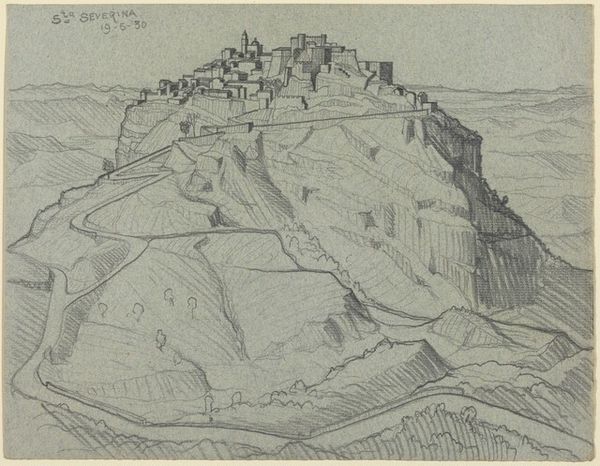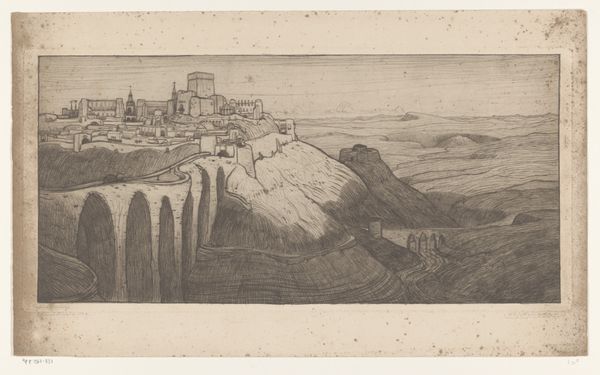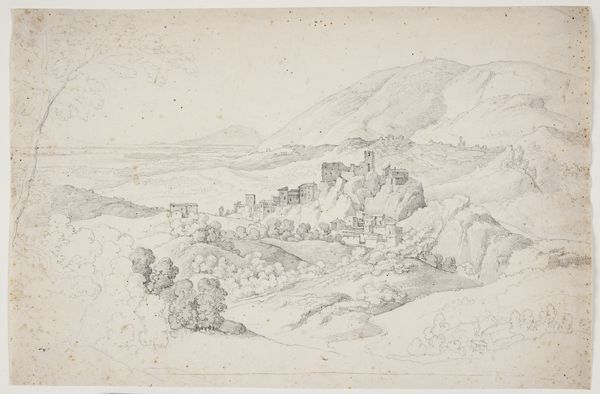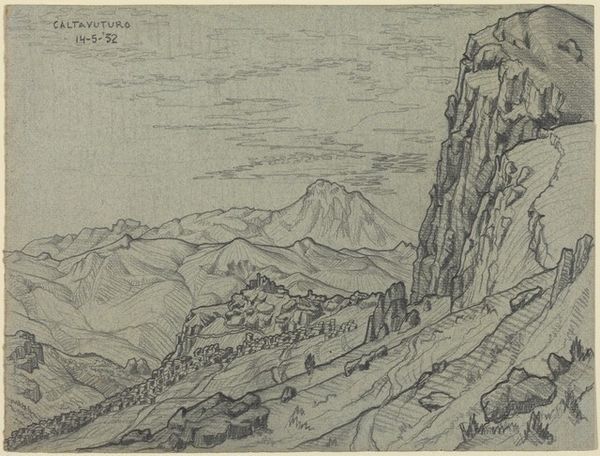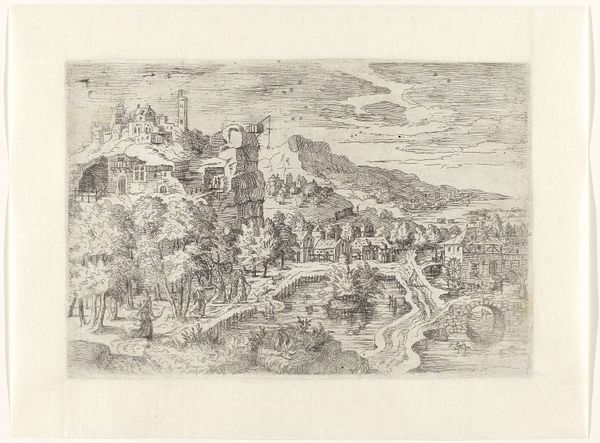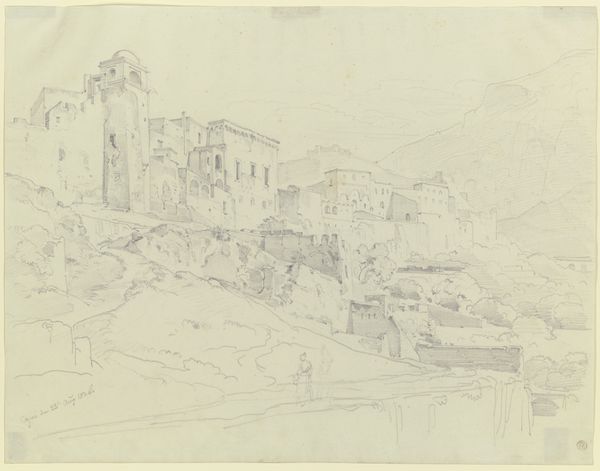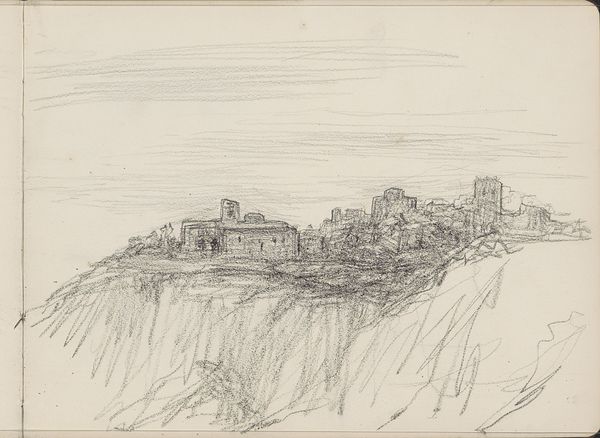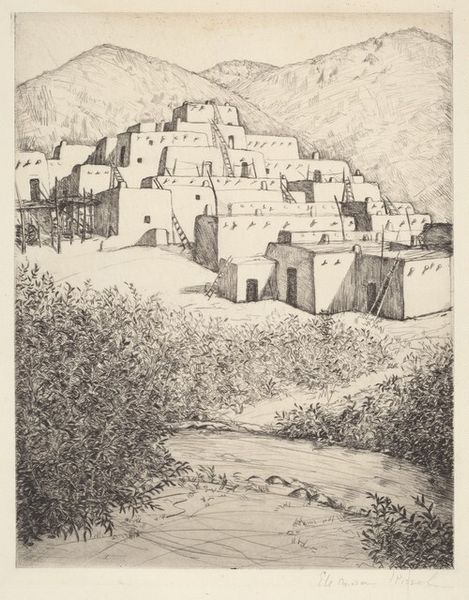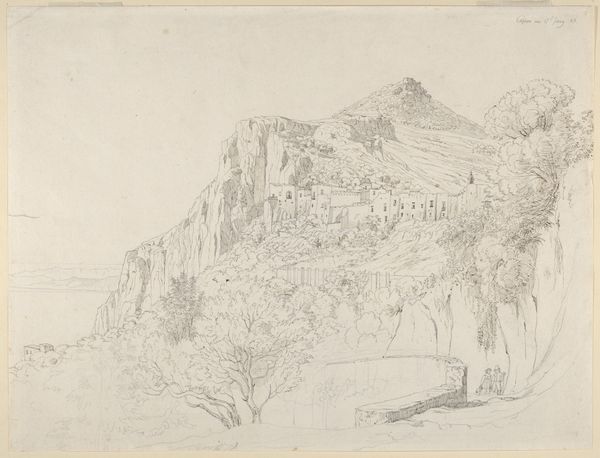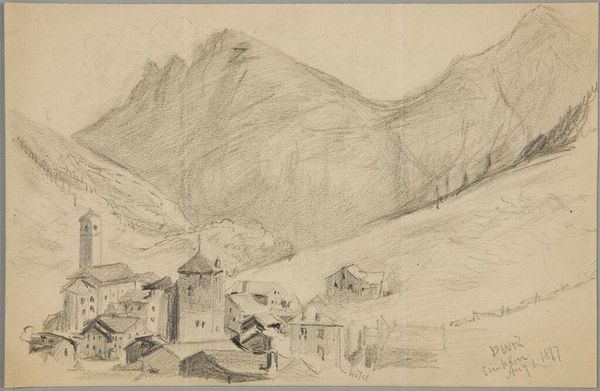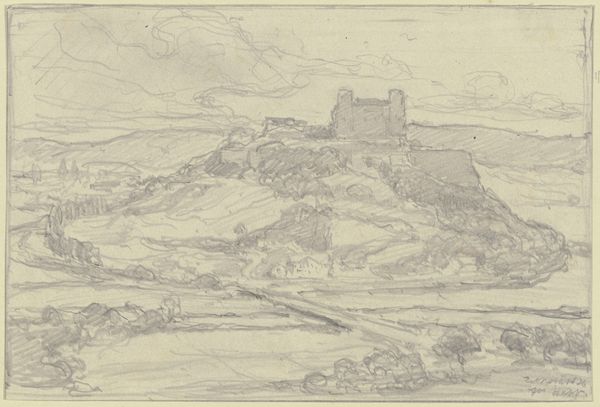
drawing, pencil
#
drawing
#
pen sketch
#
landscape
#
pencil
#
cityscape
#
realism
Dimensions: overall: 24.5 x 31.5 cm (9 5/8 x 12 3/8 in.)
Copyright: National Gallery of Art: CC0 1.0
M.C. Escher created the drawing “Palizzi, Calabria” in 1930, using graphite on paper. During the early 1930s, Escher made many sketches of the Italian countryside and villages, informed by his own experiences of travel and exploration of identity through landscape. Consider how Escher frames the town of Palizzi clinging to the steep hillside. There is a tension between the geometric buildings and the wild landscape, hinting at a narrative of human presence within a more powerful natural world. The way the town is rendered in precise lines, in contrast to the soft, rolling hills, echoes the intersection of human life with nature, reflecting a cultural dialogue between the built and the natural environment. Escher once said, “I could not live in a place where there were no hills.” Through the intimate act of drawing, the artist captures the physical and emotional experience of place. The artwork is a visual echo of societal negotiations with the environment, rendered with a sensitive and personal touch.
Comments
No comments
Be the first to comment and join the conversation on the ultimate creative platform.

